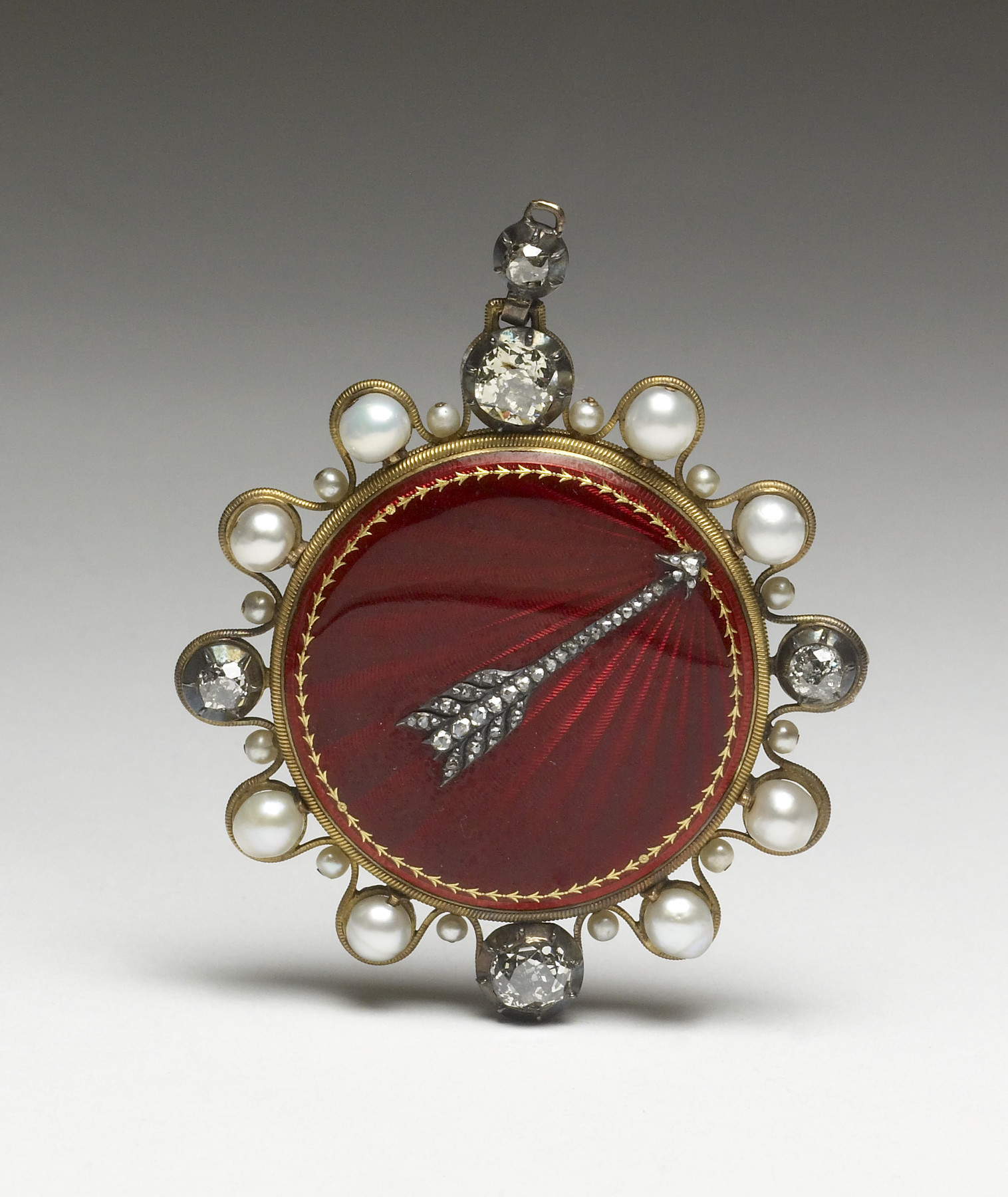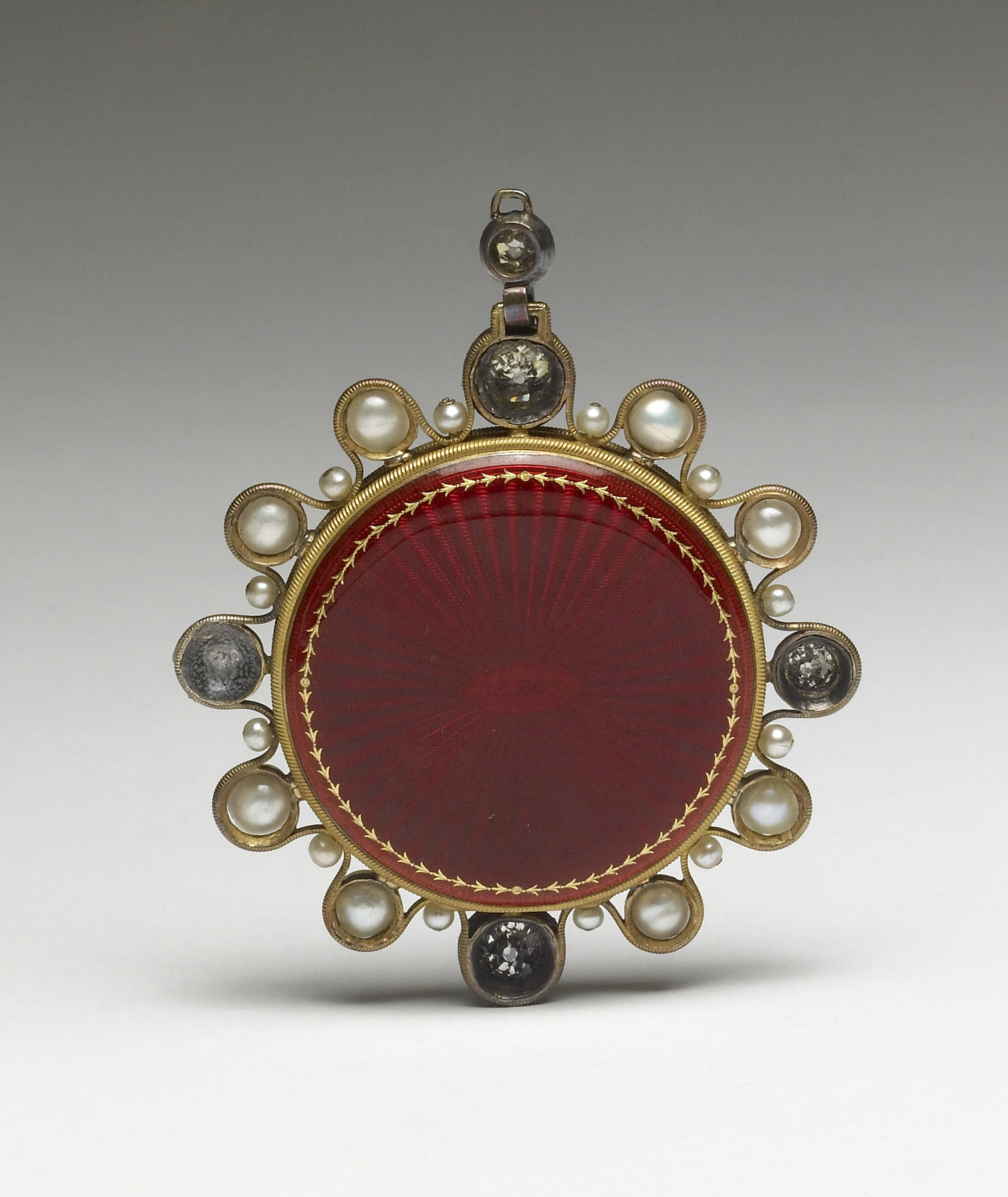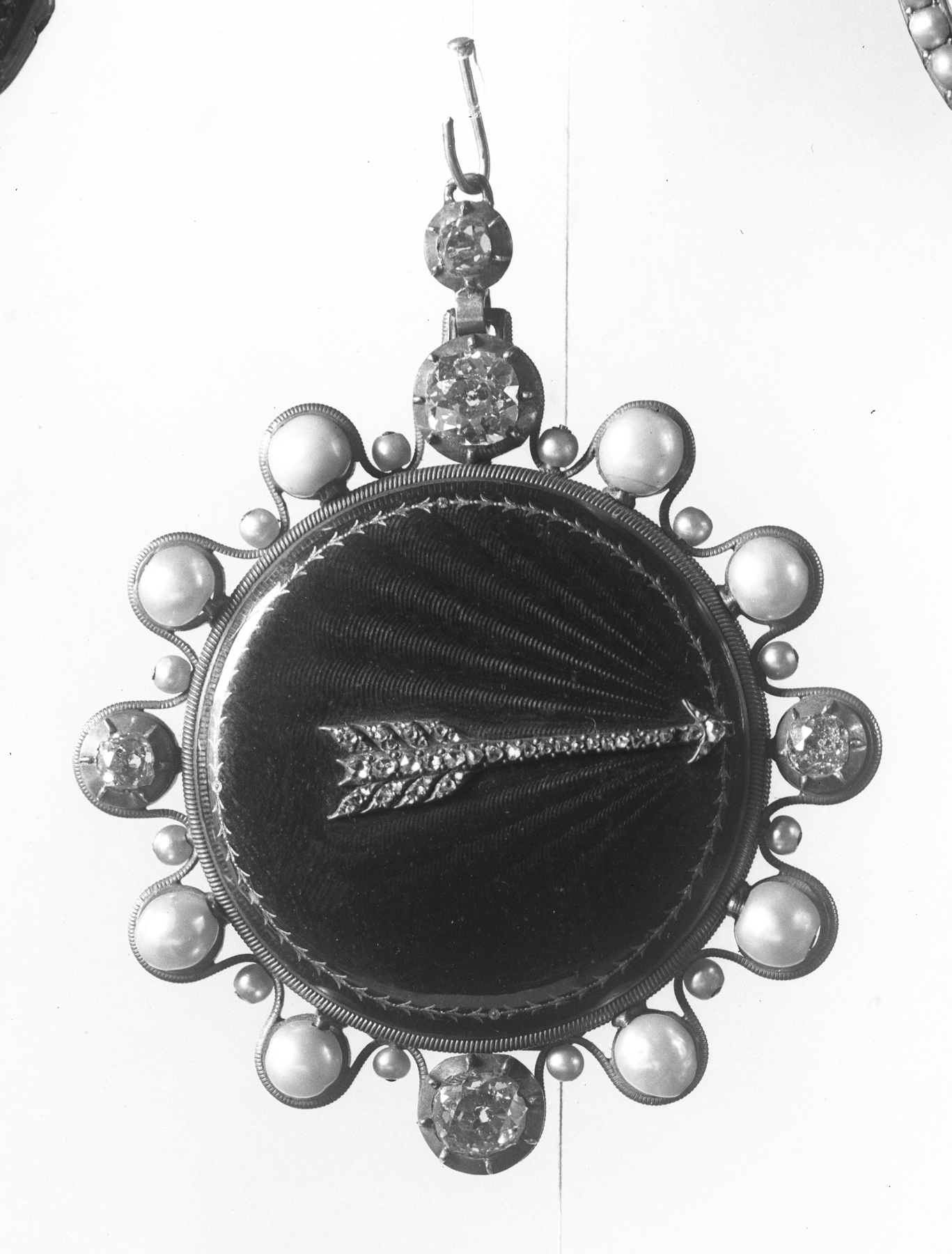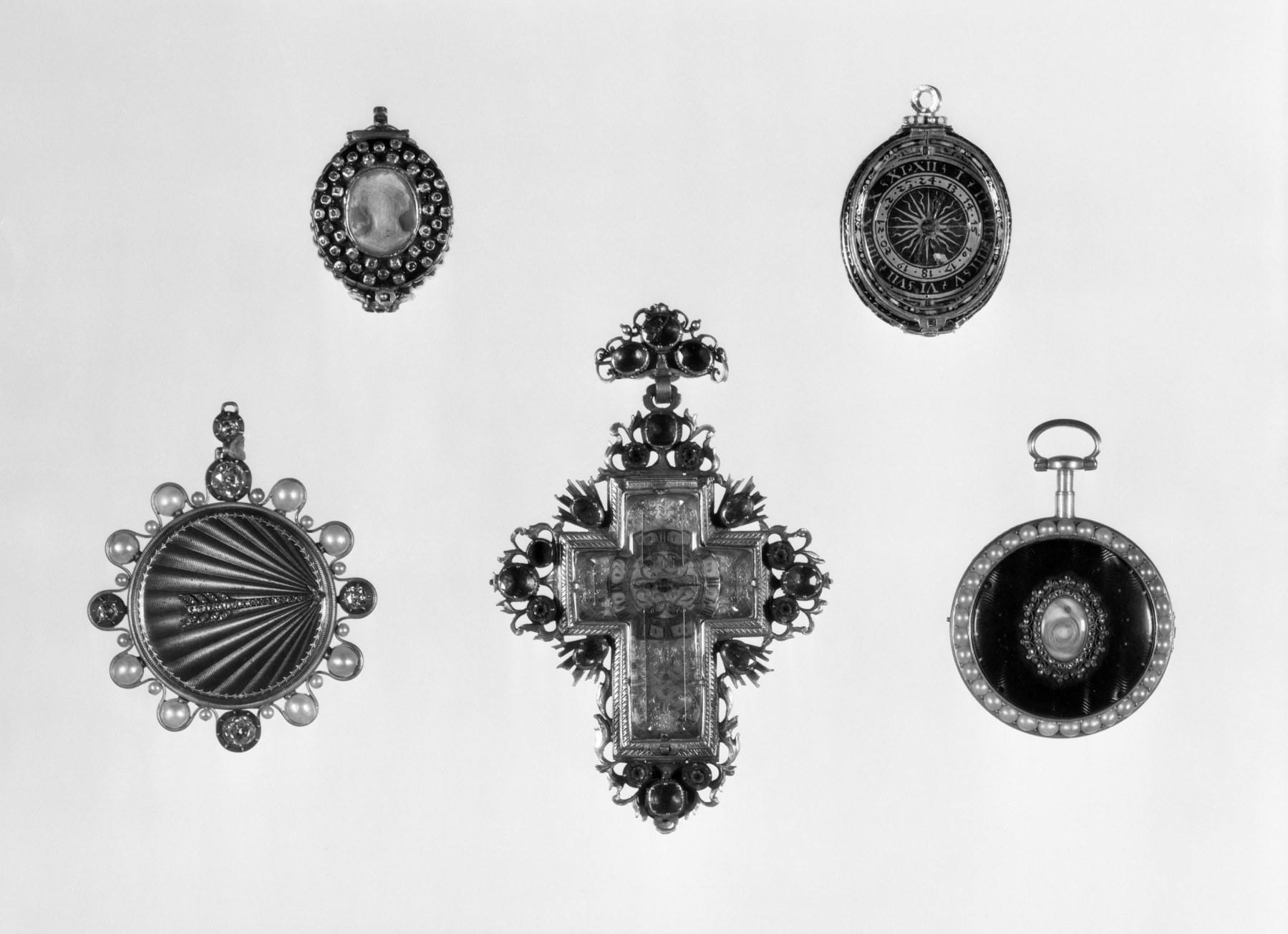Watch for Napoleon’s Mother, Letizia Bonaparte
(18th and 19th Centuries )
This unusual watch has no numbers, it belongs to a type called "montres à tact" or discrete watches. The clever design allows the time to be told by touch alone, feeling the four diamonds on the hour and the quarters, and the pearls that mark the remaining divisions of the twelve hours. The raised arrow, also in diamonds, contrasts with the smooth surrounding enamel, taking the place of watch hands. It was made for Maria Letizia Bonaparte, Napoleon’s mother, who lost her sight as she aged.
The case employs a process called guilloché, where subtle but kaleidoscopic effects are created through mechanical means. Geometric shapes are carved into metal by engine turning. The resulting patterns of fine lines are covered with transparent enamel, when light hits them it creates oscillating optic effects.
Inscription
Provenance
Provenance (from the French provenir, 'to come from/forth') is the chronology of the ownership, custody, or location of a historical object. Learn more about provenance at the Walters.
Commissioned for (?) Maria-Letizia Bonaparte (née Ramolino, 1750–1836), Paris, France, after May 26, 1805; inherited by (?) Mathilde Laetitia Wilhelmine Bonaparte, Princesse Française, Princess of San Donato (1820–1904), Rome, Italy, 1836; acquired by Anatoly Nikolaievich Demidov [Anatole Demidoff], 1st Prince of San Donato (1813–1870), Florence, Italy. Acquired by Tiffany & Co., New York, by 1893 [mode of acquisition unknown] [1]; purchased by Henry Walters, Baltimore, 1897; by bequest to Walters Art Museum, 1931.
[1] Catalogue de montres exposées chez Tiffany & Co. ayant fait partie de la collection Demidoff, Prince de San Donato (New York: Tiffany & Co., 1893), no. 23 “Montre Empire, d’aveugle, émail, diàmants et perles. Horloger, Le Roy, H’ger. de S. Alt., Rle Madame, à Paris.”
Exhibitions
| 2001-2005 | Pearls. American Museum of Natural History, New York; The Field Museum, Chicago; Fernbank Museum of Natural History, Atlanta; Houston Museum of Natural Science, Houston; Midland Center for the Arts, Midland; Royal Ontario Museum, Toronto. |
| 1999-2000 | Vive la France! French Treasures from the Middle Ages to Monet. The Walters Art Gallery, Baltimore. |
| 1984 | Objects of Vertu: Precious Works of the Eighteenth Century. The Walters Art Gallery, Baltimore. |
Geographies
France, Paris (Place of Origin)
Measurements
Diam: 2 in. (5.1 cm)
Credit Line
Acquired by Henry Walters
Location in Museum
Not on view
Accession Number
In libraries, galleries, museums, and archives, an accession number is a unique identifier assigned to each object in the collection.
In libraries, galleries, museums, and archives, an accession number is a unique identifier assigned to each object in the collection.
58.33








